A media student at North West Kent college studying BTEC level 3 Creative Television and Film production, we film and edit a lot.
Don't wanna be here? Send us removal request.
Text
What Fate Has In Store
Props,
Beer
Balaclava
Gun
Brown sack
Crowbar
Broken Bottle
Pipe
ACTORS
Uncle Steve
Uncle Mike
Crowd of people
Mother
Tom Harlow (main Actor)
Pre production
Proposal (scriptwriter) x
Treatment (scriptwriter) x
Location recce (director, prod manger) Samir, Samuel. I
Casting (director) Samir
Storyboards (director), D.O.P Samir, Samantha
Risk assessment (prod manager) Lucy
Script (scriptwriter x
Shot sched (Director) D.O.P Samantha. L Samir
Production sched (prod manager) Michael. W
Budget (prod manager) Michael. W
Call sheets (prod manager) Lucy, Samuel. I Michael. Williams
Cast
Director – Samir Belet
D.O.P - Samantha. Langley
Production manager - Samuel. Iyere
Production manager – Lucy
Production manager – Michael. Williams
5 notes
·
View notes
Video
Our short film
youtube
(via https://www.youtube.com/watch?v=aQyRJs51q2I)
2 notes
·
View notes
Text
What Fate had in store (Short story evaluation)
The script that we had been given the opportunity to film was called ‘What Faith has in Store’. It begins with Tom just starting off with university, getting himself comfortable and as he’s settling in, he gets a voicemail from family members and friends, letting him know that they can’t make it for his birthday. Feeling disappointed he heads out to the shops to go to celebrate his birthday on his own, he comes back and is taken by surprise by two people kidnapping him. Dazed & confused, trying to find a way out of this situation he ends up at a house taken into it only to find out that his friends and family have fun in the surprise party. When it came to discussing how we was going to film and plan the preproduction stage it was quite difficult because we had some work around what we had already, some things like vans and locations we had to cut out because we couldn't really get the resources but we definitely work around those areas. When it came to filming the first scene we didn't necessarily need any lighting because the natural light that we were already filming in was good enough to be our only source of light that we needed. We filmed the outside shots with steady shots and tracking shots so that we can give the audience a feel of the flow of tom whereabouts and where he's leading too. Then when he was coming back from the shops we use shots that had a lot more movement to it because we wanted to create a heightened suspense feel to the shots. Within this scene we didn't really have to use that much sound because we wanted to grasp the audiences attention by the use of soundtracks and sound effects so we didn't feel it was necessary to have any sound audio being in this scene. That's more of the second scene where it had more sound elements towards it. This is the scene where tom is taken out of the car and into the house, This scene was mostly shot with free hand movement because it was quite an intense scene. This scene we needed to have sound because we need to hear the kidnappers taking Tom out of the car as well as having the sound effects of the car doors closing and him being taken to the house. The next scene follows with him actually arriving into the house and being surprised by everybody there. This scene was probably the only seen that had the most dialogue in it, we had a used LED strip lights to set the scene of the party and cameras were in a steady fixed position so that we could set the Conversation seen at the same time we have a free hand position. We filmed scenes with music in the background and without just to know if the seen would fit well with the music playing in the background or if we have to apply our own tracks to create vibe you would have a party. To conclude our film that we had crated overall was really good as we were able to see distinctive problems with trying to fit with the original story but we overcame those obstacles, we got the right amount of shots I feel that the audio that we had was clear and overall result with in a good edit.
2 notes
·
View notes
Link
0 notes
Link
0 notes
Text
The Definition Of Great Editing
Editing is a key skill that compensate for a lot when it comes to working within media. The role that is orientated around being an editor is being able to grasp a deep understanding of your content, with the skills to be able to analysis it and see what you can do to make necessarily edits towards it and knowing how to construct a storyline out of your media so that an audience is able to comprehend the meaning of your edited piece of media.
In order to become what is called a “great editor” or do “great editing” you have to familiarise yourself with makes these titles the qualities that they are. Editors work mostly within the post production stage of media mostly using software as their main instrument of work. There jobs is circled around working with content that has already been created and been given to him/her to make changes toward. They look at the content and help produce a narrative out of it that improves the value or story continuity. They work with correcting any content with the use of colour correction, during the filming process the content has been shot to make it look clear and crisp but the editor job is to add those finishes touches to shot to make it more rich and finer to give it more appealing style to it. Uncoloured corrected shot are like blank canvas to editors so they work with finding the right saturation and brightness to make it look more visually entertaining. Editors have to be able to process a mass amount of footage and compress it to the clients need which requires immense concentration and hard work because you could be working with 45 hours of video content and asked to compress it an hour segment so it’s the process can be time-consuming. The capability to be able to work with an array of editing software to your disposal such as Apple’s Final Cut Pro (FCP), Abobe After Effects (AE) as a platform for your media to; insert music, sound effects, graphics, narrations, dialogue to apply to your video content. Editors need to understand the limits to what they can and can’t work with. Some of the content that they might want to use may be claimed by other people so it’s key for an editor to be as original as possible so they he doesn’t have to face the risk of wasting his/her trying to find something that would create a copyright situation.
After outlining the fundamentals and the situations that an editor faces, the discussion will move onto the process of actually editing and an editor’s insight into working with different programs to make the content that we watch on our televisions today. First thing first is making sure that you’re organised because this will reflect your workflow for anyone you work with. File arrangement is key to making sure you’ve placed all your media in the right folders so that you can easily locate saving yourself a lot of time. Some content you will have to transcode your footage because the programs you work with aren’t going to be able correspond with your cameras footage so transcoding basically makes it editor friendly. You might not need to go through process if you work with a camera such as black magic which already does this process for you it depends on what software you work with. You then import your footage into the program. This is where you’re analytical skills come into play because you need to look at your footage and see what content you don’t need and for the ones that you need you rename them depending on what the clip consist of or what the shot it was taken it. Once you’ve gone through this stage you sync any sound that you need sync because the built in camera sound are not of a professional standard to be edited with. Syncing the sound requires you to find a beat or a sound within the clip -that would also be heard on your newly recorded sound- and cut on that specific beat and synchronize the pieces together. You delete the camera sound and work with the sound which sounds clearer. You are now ready to start editing your video. This is where you look at your clips and you start to look at what is important to your edit and make a chronological edit out of your content. Once you’ve made your edit you need to look at your sound and see where in places you might need to mix your sound for certain areas that need it, remembering that it can’t be too high nor can it be too low. Then you start to look at grading the content and adding the necessary graphics to make the content look more engaging. At this stage you look at skin tones, mid tones, highlights, anything that doesn’t right in terms of colour or appearance, being versatile and able to more than one program is key because that mean you get a lot more opportunities to make your video look even better that programs can offer. Finally being able to publishing your content onto a social platform such as YouTube, Vimeo, Reddit, and Facebook to reach a target audience. This requires exporting your footage then transcode it to an mp4 format because that what most of those platforms run on.
In conclusion, you are the editor and you have the capability to choose how you want content to be portrayed and be digested by audience in a certain way. How you do this is dependent on how much time and effort you are willing to put it into manipulating the content. Good editor allow the audience to understand the story, so the opposite of a good editor doesn’t allow to audience to understand the main point hence subverted the true meaning of whatever video you’re editing.
0 notes
Text
Cinematographer Essay - Director of Photography
Don Burgess
Don Burgess is an American cinematographer and has worked on a variety of films within his cinema history. His history within being a DOP started off with him taking his interest into photography. He was then approached by a cinematographer called Johnny Stephens who had introduced Burgess with the opportunity to go on a commercial shoot with him. From that moment on he had decided to divert his interest within photography and turn it more toward cinematography. He then took his interest and manifested it into the role of being a documentary cameraman, working as 2nd Unit DOP on actions features. Whilst being a student at the ART Centre College of Design and being given the opportunity by a former cinematographer to work on features film, Burgess was able to mould a career with his extensive experience of cinematography collaborating with directors that have given him the opportunity to work with directors such as Bob Zemickis, Phillip Noyce, Sam Raimi, Albert and Allen Hughes on films such as the “Forest Gump”, “Source Code”, “Enchanted”, “Flight” etc… From these opportunities he was able to accomplish the chance to be nominated awards for his work. One being an Oscar nomination for the best cinematographer in 1995 for “Forest Gump”, two ASC Award nominations; one for “Forrest Gump” and one for his outstanding cinematography for “the court marshal of Jackie Robinson” Following on with a BAFTA Film Award nomination in 1995 for “Forrest Gump” receiving a lot more later on…
From researching into Burgess, I was able to find an article about interview he had with Provisionals discussing his film history and how he was got into the film business. Discussing his style of filming and the elements that he employs in his work that coincide with factors such as the equipment he’s used in his time of being a DOP and delving into his experience of being a cinematography. Within most of his films when creating the shots he likes to consider the physiological impact that his work will have on his audience. He describes the camera as a tool to tell the story for the film. His method is by making his work look like nobody actually notices you’re actually doing it. Some films look as if being dramatized not really complementing the director but subverting this definitely makes your work as a cinematographer count.
Within the discussion, he was questioned about shooting spherical or anamorphic. Shooting in an anamorphic format is considered to be true widescreen. Whilst shooting, the image is widened with an anamorphic lenses then the content is taken into post production and is compressed, still attaining the richness and quality of the shot just in a crop sized format. Shooting a spherical format is more of a generically used type of format and don’t really affect the aspect ratio or dimensions of the shots like anamorphic lenses do. With that being said I have managed to find that he likes to shoot in an anamorphic format because it feels likes it gives his shots more of an odd setting, this can be seen in an example of one his films such as “Forrest Gump”. When shooting in this format it allowed for Burgess to portray the character of Forrest to look quite out of context, allowing for the audience to see things how he in a odd empathic way. Anamorphic style of filming has a tendency of doing this especially in a case this because the whole basis of the film was the complexity that forest had in his life with the problem that he had, so burgess definitely took into consideration that this style was best suited for a film like Forrest Gump. The use of wide lenses in this film creates an effect to show relationship between him and everything else. However with spider man, he wanted to shoot in a anamorphic format but was not but because director “Sam Raimi” pushed very strongly for Spiderman to be filmed in scope it made views on his style of filming clear that he feel with this type of format your able to get a lot more whereas using any other format doesn't really match up to what the audience expects.


Burgess takes into consideration of composition a shot very seriously. This is why his clash between using anamorphic and spherical style is very key to understand because it follows on to show how we as the audience interprets the shot. He feels that when you shoot in a spherical setting with long lens you isolate your subject not really considering all the elements but just the subject, but anamorphic allows you grasp a tighter hold on the subject at the same time being able to acknowledge the rest of the world. The two lenses are very crucial to his decision making within cinematography because it ultimately controls how his audience is going to perceive the shots that he creates. He could film it in the wrong format and send out completely different message to what the main intention was meant for.
From what I’ve research, burgess has the capability to use equipment very quickly and effectively. Always being given the opportunity to tests it qualities before actually using it to feature. A following a film that he worked on called “The book of Eli” allowed him to use the Red Camera. The film was based around a post apocalyptic world, trying to portray this dystopia type of setting and he felt that this camera was able to achieve this effect. He tried several lenses to see what suited best for the films criteria the lens included: Zeiss Master Primes, the Cooke S4 lenses and the Panavision primo’s, after conducting the test he found that Primo’s where best equipped for the job. His relationship with the Red Camera has been seen in his work through “The book of Eli” and the “Source Code”. He feels that this camera allows him to get that filmic look the audience will be able understand.

When asked about composing lighting, he quotes back to when he had worked on the “Source Code” and the importance of obtaining it is very important. Not only was the lighting a factor but other elements such as using green screen. As a cinematographer he feels when it comes to light is to keep it as natural as possible. The scene was filmed on a train so you have to work around that atmosphere and make the audience believe it’s a train setting so lighting each segment for the scene is key thing to consider. Using computer program to actually manipulate the light allowed he scene to also be attainable but still remembering that the lights are never sustained.
Looking at the films, all of the films have quite have particular style that they are filmed in which has initially made the effectives that they are today. But acknowledging his extensive with the formats that he shoots in it allows for him to know how to impact the audience at the same time as considering techniques such as lighting, composition and creativity within his work.
3 notes
·
View notes
Text
Proposal for News
Title:
The moment hour
Duration:
30 minutes
Audience:
The audience will be aimed at young teenagers but adults who are interested in what’s happening in the world we live in today.
Format:
HD – 1920-1080
Resume:
This news show is going to let you know as the audience all the latest news about the world that we live in today. If it’s happening you’re going to know about it instantly. There will lots of topics that will be related to a variety of our audience so the demographic of the people watching the show will be varied because the topics that will be discussed will be understandable and interesting for all audience to read and comprehend.
The show will talk about what’s been happening within recently such as topics like the elections, Jeremy Clarkson alleging assaulting a producing, natural disasters & man made situations such as the earthquake that’s happened in Bangladesh & the movements that’s currently occurring with Isis.
Suggested elements:
Introduction of the news shows and what we’re about
Talk about the elections
Discussion of the alleged assaulting with Jeremy Clarkson and a producer
Natural disaster discussion will occur were we talk about any problems recently in the about nature
Man made moment will then take place where we focus on the movements of Isis and where they are at in the world that we live in today.
0 notes
Text
Day of Filming San Aglia - Fun and Games(Music Video)
Below are pictures from the day we filmed the music video, it was very enjoyable and a fun experience. The band were very cooperative with us and we were cooperative with them too. Everybody was on time and punctual so everything had went to plan and flowed perfectly.
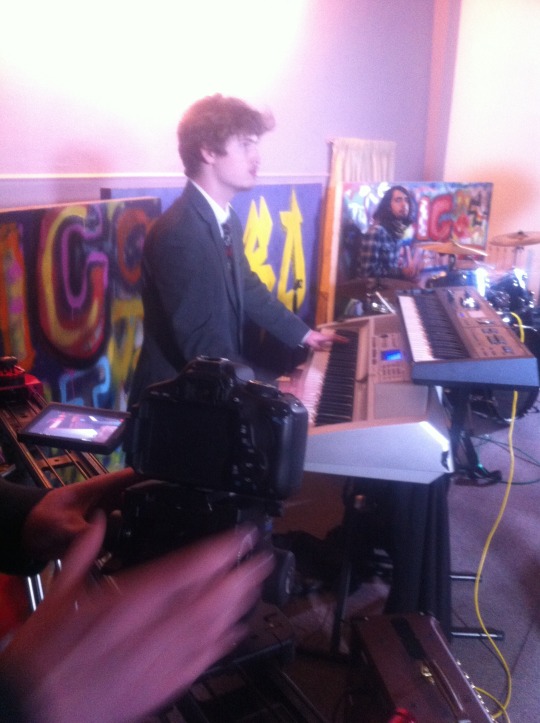
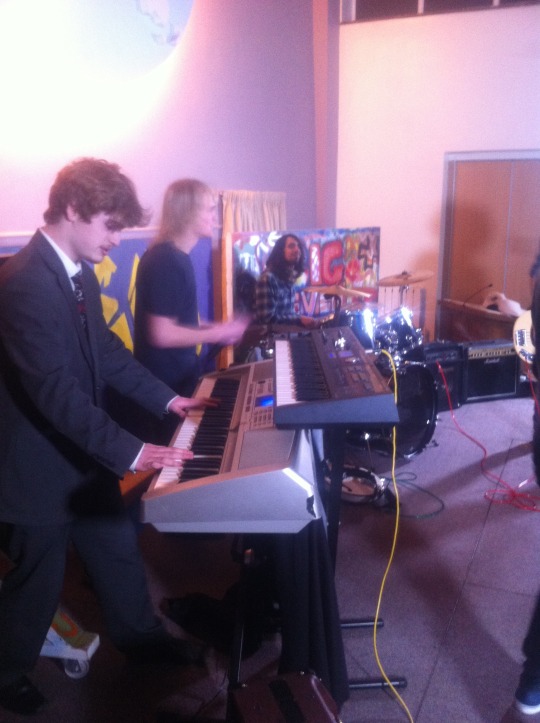
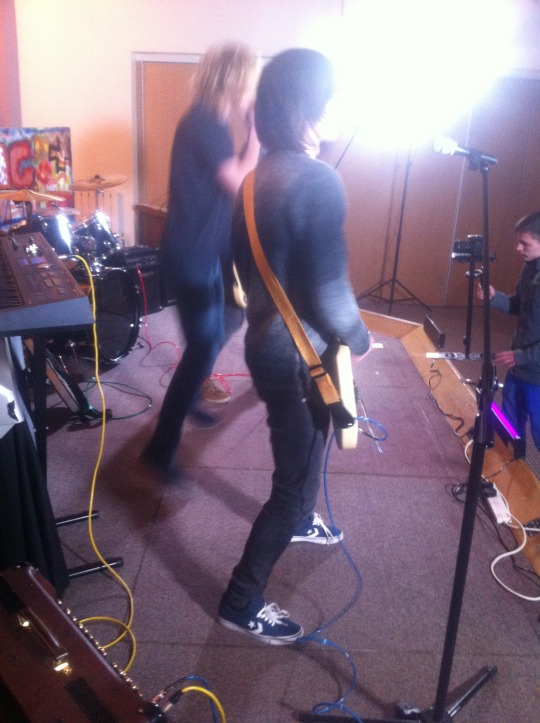
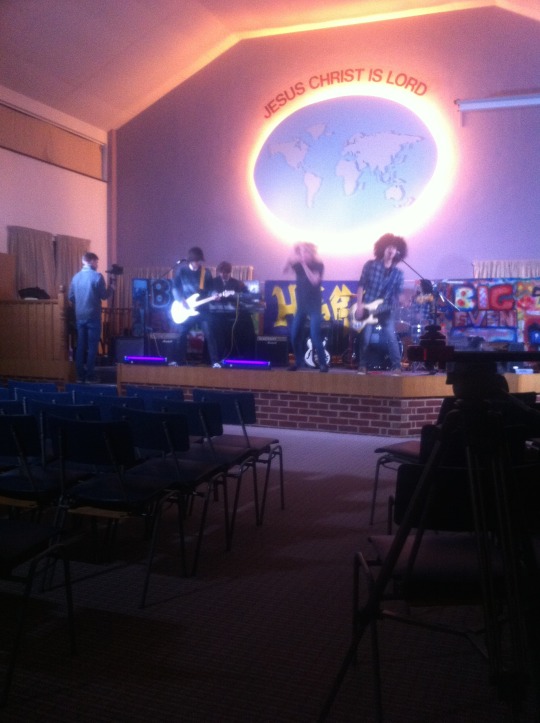
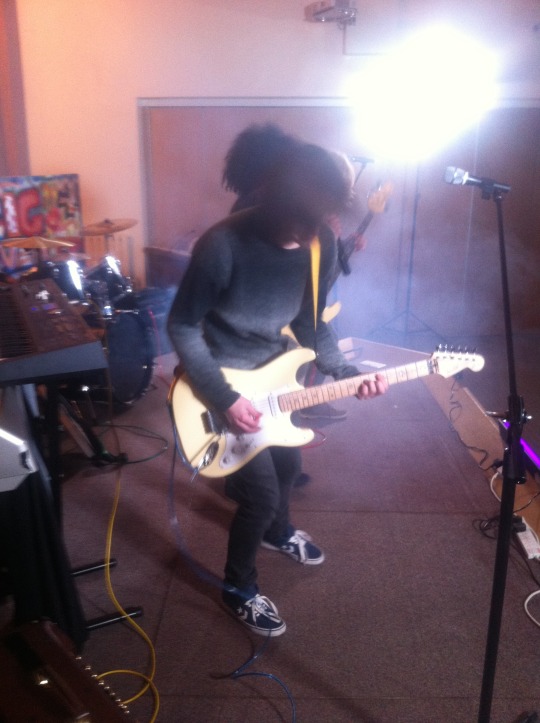
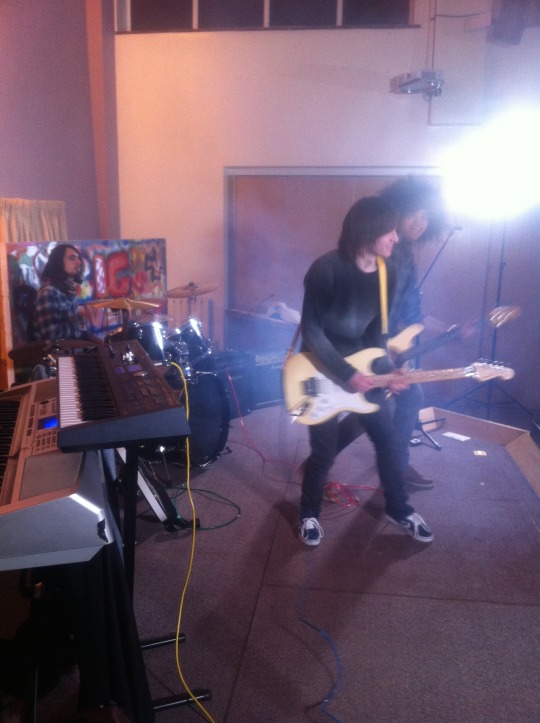
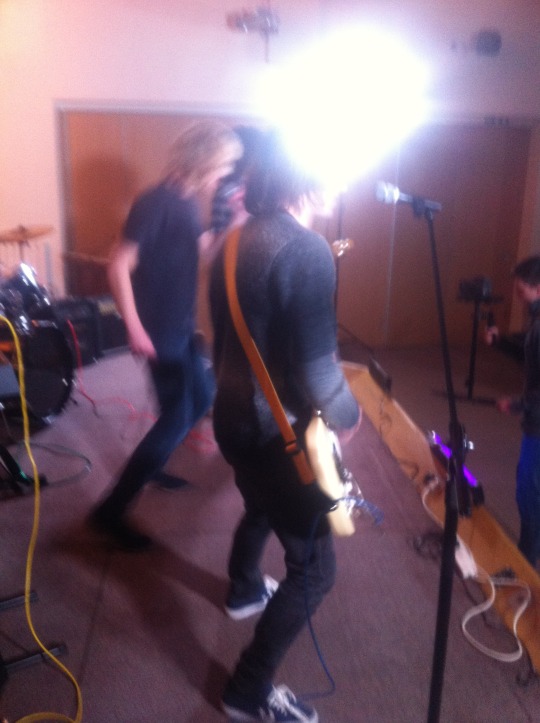
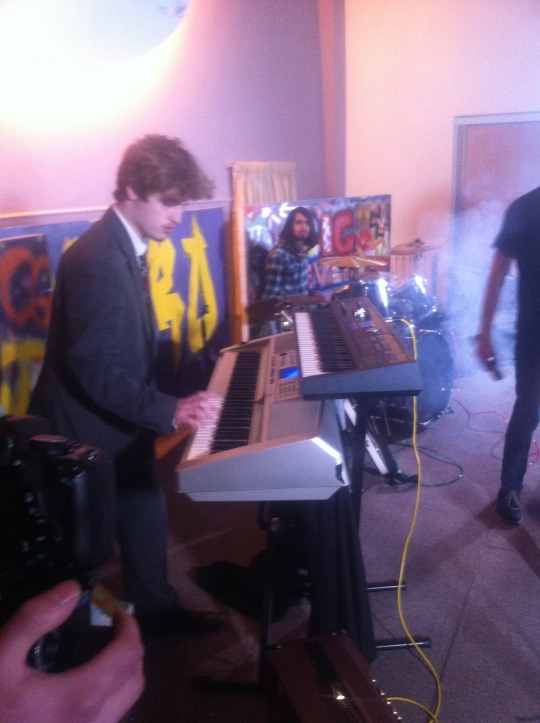
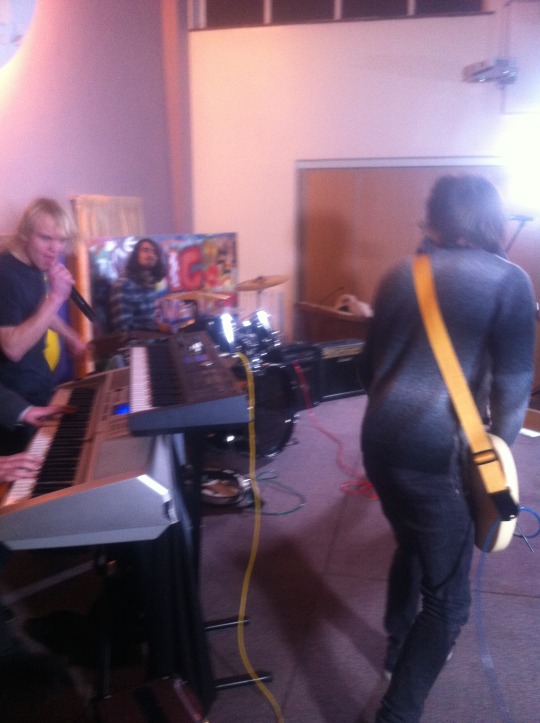
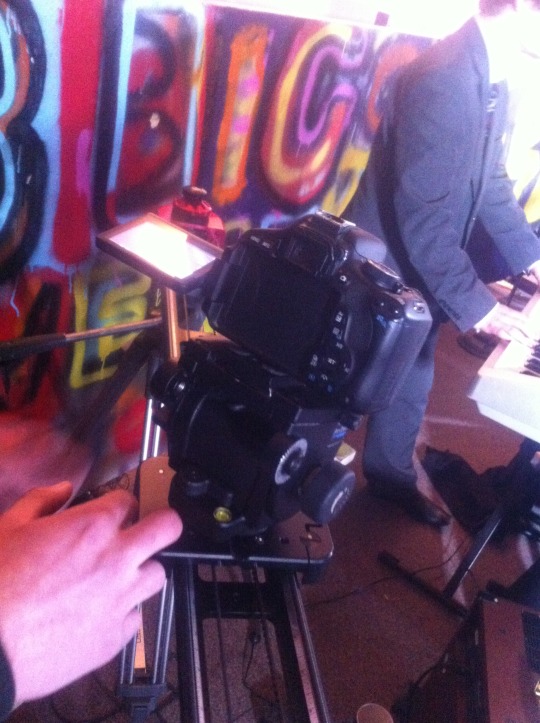
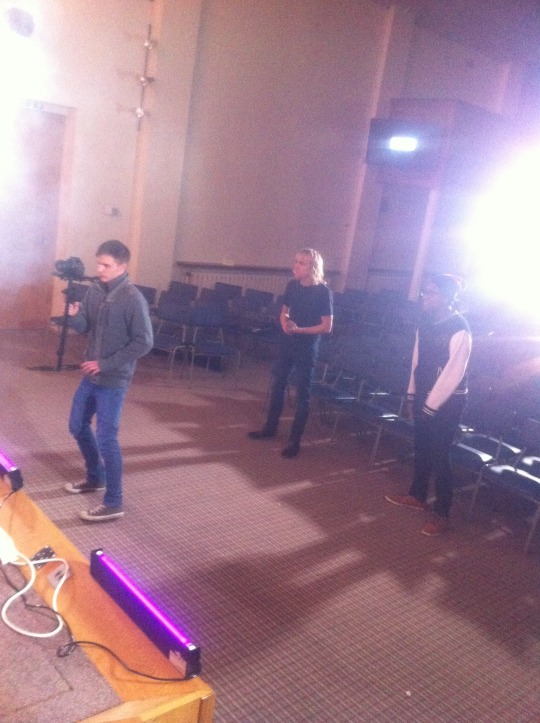
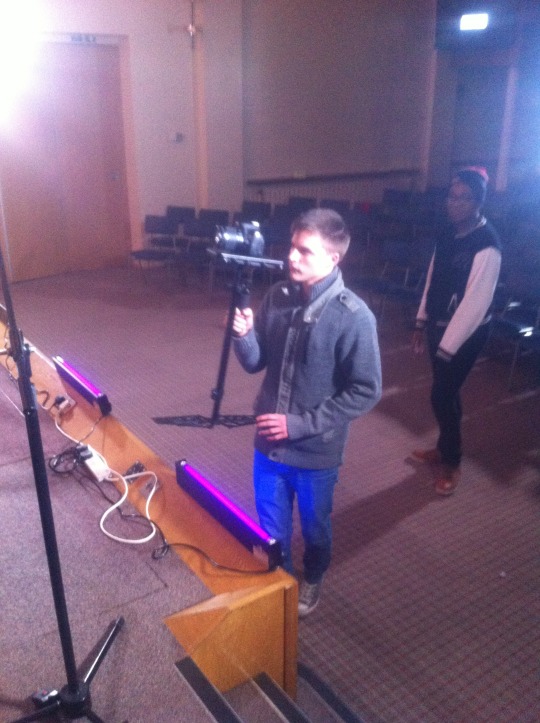
1 note
·
View note
Text
Costume Ideas
For the costume, there was very few ideas that we could of chose from in terms of costumes. We were thinking that band could wear clothes with mostly all black clothing but we thought it wouldn’t go well because of the meaning of the song, it wouldn’t reflect too well. There was another idea of all of them wearing leather jackets where they all had the same logos on them but only four of them had it and they’re’s five of them so it wasn’t possible. We decided that since that since the song was called fun and games, it would be best for them to wear a variety of casual, smart casual or a trendy sort of look to look more versatile, different and out of the ordinary.
1 note
·
View note
Text
Brainstorm Ideas
For the ideas that we had for the music video, we had a limited amount of band and singers we could of chose from, below are the bands/singers and also screenshots of the groups social interaction pages we got into contact with:
Crash Island

San Aglia

Geoffrey(G£o.FFrey)

We decided to go onto the website named ‘Best of British Unsigned Music’, which was where we found the band ‘Crash Island’. We started communicating to the band to try and organise a music video for them as soon as possible due to their busy schedule. Unfortunately due to the fact that the band was being very unresponsive and not communicating, we was unfortunately unsuccessful with them and decided to scrap them.

Another member of our group was in contact with a singer named ‘Geoffrey’ who is also a friend of one of our members but we had declined to use him as we had another opportunity to do another band named ‘San Aglia’.
They are very communicative people towards me and another member of the group. It’s is only a matter of what song to choose, how we are going to construct the story to visual content, when we are going to film them and what time we are going to film.
Below are screenshots of the conversation between the band and the members:



1 note
·
View note
Link
As a band, we participated in the production of this video for our friends’ Music Video project. We thoroughly enjoyed the experience and it was a pleasure t…
1 note
·
View note







